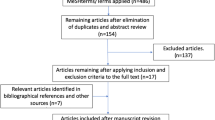Abstract
Understanding the sites of pharyngeal collapse is mandatory for surgical treatment decision-making in obstructive sleep-apnea-hypopnea syndrome patients. Drug-induced sleep endoscopy (DISE) allows for the direct observation of the upper airway during sedative-induced sleep. In order to re-create snoring and apnea patterns related to a spontaneous sleep situation, the authors used a target-controlled infusion (TCI) sleep endoscopy (DISE-TCI), comparing this technique to conventional DISE, in which sedation was reached by a manual bolus injection. The authors conducted a prospective, randomized, unicenter study. The apneic event observation and its correlation with pharyngeal collapse patterns is the primary endpoint; secondary endpoints are defined as stability and safety of sedation plans of DISE-TCI technique. From January 2009 to June 2009, 40 OSAHS patients were included in the study and randomized allocated in two groups: the bolus injection conventional DISE group and the DISE-TCI group. We recorded the complete apnea event at the oropharynx and hypopharynx levels in 4 patients of the conventional DISE group (20%) and in 17 patients of the DISE-TCI group (85%) (P < 0.0001). Two patients needed oxygen in the conventional DISE group because of severe desaturation that resulted from the first bolus of propofol (1 mg/kg) (P = 0.4872 ns). We recorded the instability of the sedation plan in 13 patients from the conventional DISE group (65%) and 1 patient from the DISE-TCI group (5%) (P = 0.0001). Our results suggest that the DISE-TCI technique should be the first choice in performing sleep endoscopy because of its increased accuracy, stability and safety.

Similar content being viewed by others
References
Young T, Peppard PE, Gottlieb DJ (2002) Epidemiology of obstructive sleep apnea: a population health perspective. Am J Respir Crit Care Med 165:1217–1239
Borowiecki B, Pollak CP, Weitzman ED et al (1978) Fibro-optic study of pharyngeal airway during sleep in patients with hypersomnia obstructive sleep-apnea syndrome. Laryngoscope 88:1310–1313
Sadaoka T, Kakitsuba N, Fujiwara Y et al (1996) The value of sleep nasendoscopy in the evaluation of patients with suspected sleep-related breathing disorders. Clin Otolaryngol Allied Sci 21:485–489
Croft CB, Pringle M (1991) Sleep nasendoscopy: a technique of assessment in snoring and obstructive sleep apnoea. Clin Otolaryngol Allied Sci 16(5):504–509
Pringle MB, Croft CB (1991) A comparison of sleep nasendoscopy and the Muller manoeuvre. Clin Otolaryngol Allied Sci 16:559–562
Kezirian EJ (2006) Drug-induced sleep endoscopy. Oper Tech Otolaryngol 17:230–232
Roblin G, Williams AR, Whittet H (2001) Target-controlled infusion in sleep endoscopy. Laryngoscope 111:175–176
Ward Flemons W, Buysse D, Redline S et al (1999) Sleep-related breathing disordered in adults: recommendations for syndrome definition and measurement techniques in clinical research. The report of an American Academy of Sleep medicine Task Force. Sleep 22:667–89
Collop NA, Anderson WM, Boehlecke B et al (2007) Clinical guidelines for the use of unattended portable monitors in the diagnosis of obstructive sleep apnea in adult patients. Portable monitoring task force of the american academy of sleep medicine. J Clin Sleep Med 3:737–747
Punjasawadwong Y, Boonjeungmonkol N, Phongchiewboon A (2007) Bispectral index for improving anaesthetic delivery and postoperative recovery. Cochrane Database Syst Rev Oct17 (4):CD003843
Absalom A, Struys MMRF (2007) An overview of TCI & TIVA. 2nd edn. Academia Press, Ghent
Hewitt RJ, Dasgupta A, Singh A et al (2009) Is sleep nasendoscopy a valuable adjunct to clinical examination in the evaluation of upper airway obstruction? Eur Arch Otorhinolaryngol 266:691–697
Rojewski TE, Schuller DE, Clark RW et al (1984) Videoendoscopic determination of the mechanism of obstruction in obstructive sleep apnea. Otolaryngol Head Neck Surg 92:127–131
Woodson BT, Wooten MR (1994) Comparison of upper-airway evaluations during wakefulness and sleep. Laryngoscope 104:821–828
Kotecha BT, Hannan SA, Khalil HM et al (2007) Sleep nasendoscopy: a 10-year retrospective audit study. Eur Arch Otorhinolaryngol 264:1361–1367
Quinn SJ, Daly N, Ellis PD (1995) Observation of the mechanism of snoring using sleep nasendoscopy. Clin Otolaryngol Allied Sci 20:360–364
Rodriguez-Bruno K, Goldberg AN, McCulloch CE et al (2009) Test-retest reliability of drug-induced sleep endoscopy. Otolaryngol Head Neck Surg 140:646–651
Conflict of interest
None.
Author information
Authors and Affiliations
Corresponding author
Rights and permissions
About this article
Cite this article
De Vito, A., Agnoletti, V., Berrettini, S. et al. Drug-induced sleep endoscopy: conventional versus target controlled infusion techniques—a randomized controlled study. Eur Arch Otorhinolaryngol 268, 457–462 (2011). https://doi.org/10.1007/s00405-010-1376-y
Received:
Accepted:
Published:
Issue Date:
DOI: https://doi.org/10.1007/s00405-010-1376-y




